Composite Decking: Dream Deck Designs
Composite Decking: Dream Deck Designs
Designing your outdoor living space is a significant undertaking, blending aesthetics, functionality, and durability. While traditional wood decking offers a classic look, composite decking has emerged as a compelling alternative, boasting impressive longevity and low-maintenance characteristics. This comprehensive guide explores the diverse world of composite decking, offering inspiration and practical advice for designing your dream outdoor haven.
Understanding Composite Decking: Beyond the Basics
Before diving into design inspiration, let's solidify our understanding of composite decking materials. Unlike traditional wood, composite decking is a manufactured product combining recycled wood fibers and high-density polyethylene (HDPE) or other polymers. This blend creates a material that's remarkably resistant to rot, insect infestation, splintering, and fading—all common problems with natural wood.
Several key benefits drive the popularity of composite decking:

- Durability: Composite decking significantly outlasts wood, withstanding harsh weather conditions and heavy foot traffic without significant degradation. Its strength and resilience make it ideal for high-use areas.
- Low Maintenance: Forget the annual sanding, staining, and sealing required for wood decks. Composite decks need only occasional cleaning with soap and water to maintain their pristine appearance.
- Aesthetic Versatility: Modern manufacturing techniques allow composite decking to mimic the look of natural wood, with realistic grain patterns and a wide range of colors. Beyond wood-like finishes, you can find sleek, modern designs with unique textures and colors.
- Eco-Friendly Options: Many composite decking manufacturers utilize recycled materials in their production, contributing to a more sustainable approach to outdoor construction. Look for certifications that verify the use of recycled content.
- Improved Safety: Composite decking is less slippery than wet wood, improving safety, especially around pools or in areas with frequent rainfall.
Design Elements: Crafting Your Dream Deck
Now that we understand the material, let's explore the exciting possibilities for designing your dream composite deck. The following sections delve into key design elements to consider:
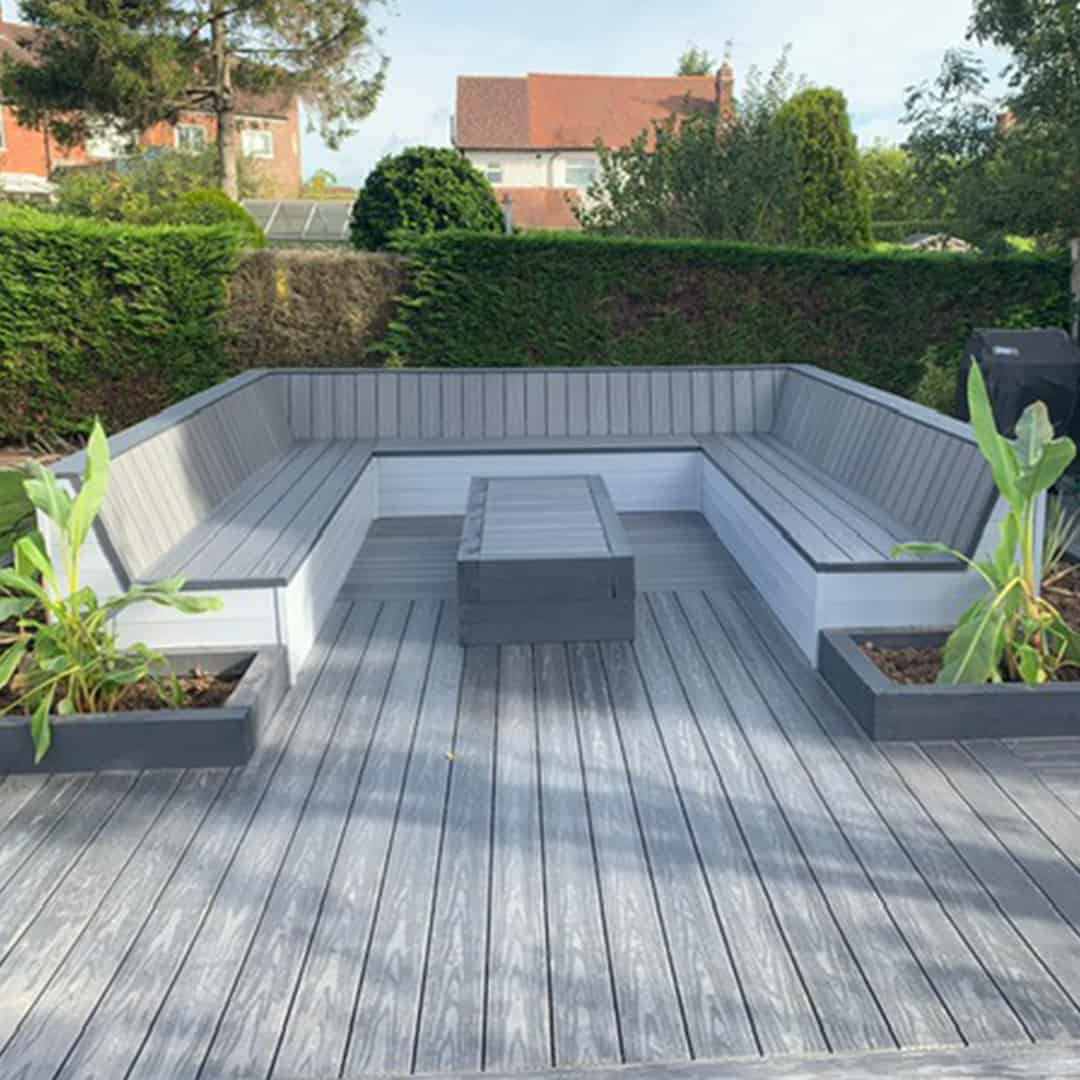
1. Defining Your Deck's Purpose and Size
Before selecting materials or styles, clearly define how you intend to use your deck. Will it be a quiet space for relaxation, a vibrant area for entertaining guests, or a combination of both? This directly impacts the size, layout, and features you’ll incorporate.
Consider factors like:

- Space Available: Measure the area carefully to determine the maximum deck size possible while maintaining sufficient clearance around your home and other structures.
- Lifestyle Needs: Do you need ample seating for large gatherings? Would a built-in grill or outdoor kitchen enhance your enjoyment? Think about specific activities you'll be engaging in on the deck.
- Budget: Composite decking comes in a range of price points. Establish a realistic budget early in the planning process to guide your material selections and design choices.
2. Choosing the Right Composite Decking Material
The market offers a wide variety of composite decking brands and styles. Research different manufacturers to compare:

- Color and Texture: Explore the available color palettes and textures. Do you prefer a classic wood look, a sleek modern finish, or something more unique? Consider how the chosen color will complement your home's exterior and surrounding landscape.
- Board Width and Length: Standard board dimensions influence the overall visual appeal of the deck. Wider boards create a more modern aesthetic, while narrower boards evoke a more traditional feel.
- Warranty: Reputable manufacturers offer comprehensive warranties covering defects in materials and workmanship. This protects your investment and ensures peace of mind.
- Durability and Resistance: Check for certifications related to stain, fade, and scratch resistance, particularly if you live in a region with harsh weather conditions or anticipate high foot traffic.
3. Deck Layout and Design Styles
The layout and design style significantly impact the overall ambiance of your deck. Consider these options:
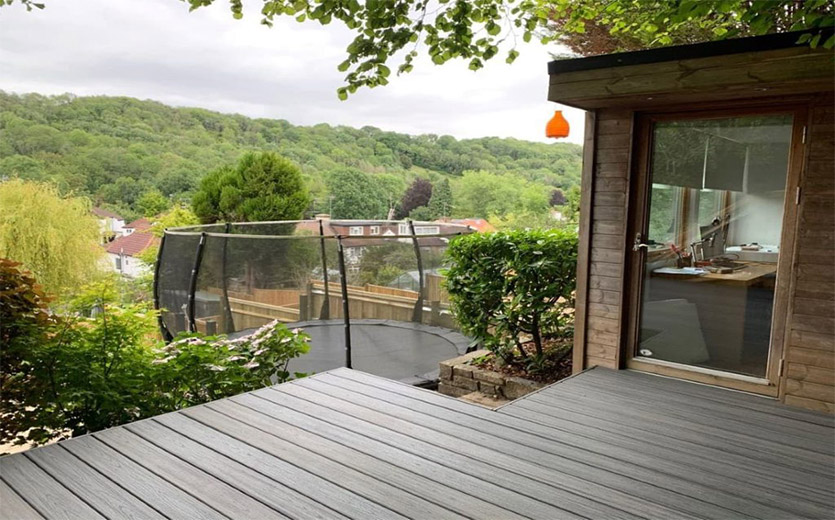
- Traditional Rectangular Deck: A classic and versatile choice, ideal for both small and large spaces.
- L-Shaped Deck: Maximizes usable space and often incorporates seating areas in different orientations.
- Wrap-Around Deck: Enhances the connection between your home and the surrounding landscape.
- Multi-Level Deck: Creates visual interest and distinct zones for different activities, ideal for larger properties.
- Free-Form Deck: Offers unparalleled design flexibility, creating organic shapes and curves to complement irregular landscapes.
4. Incorporating Key Features and Accessories
Elevating your composite deck design involves incorporating thoughtful features and accessories:
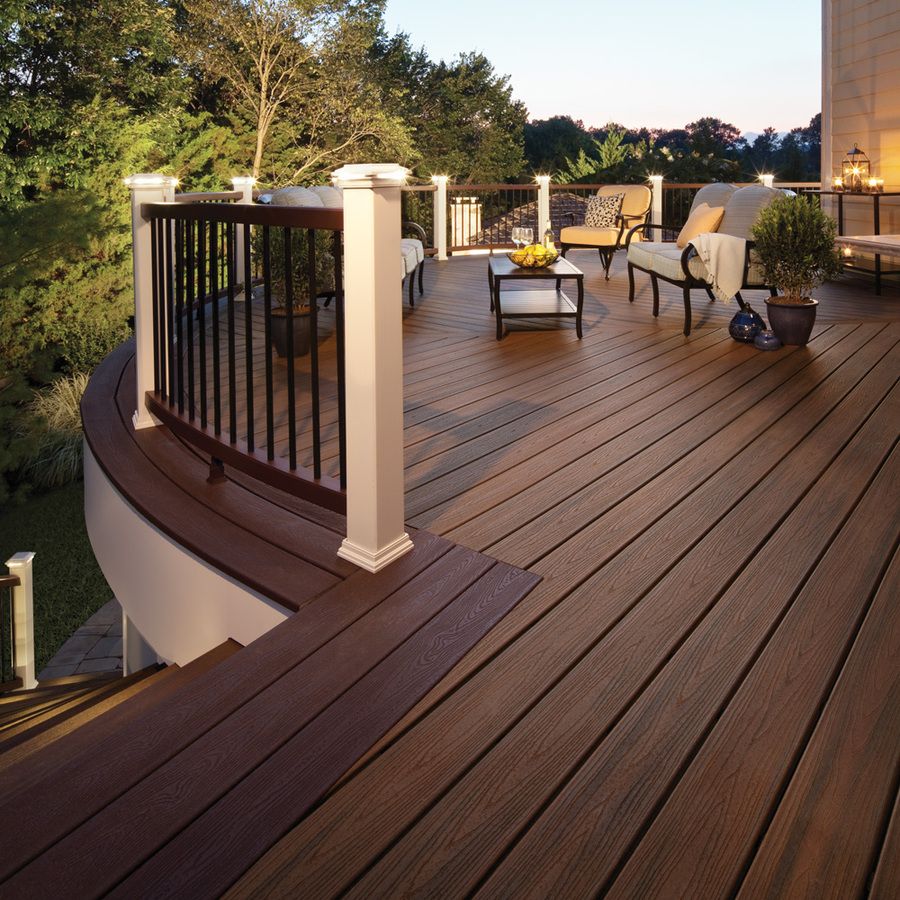
- Railings: Choose railings that complement the deck's style while ensuring safety. Consider materials like aluminum, wrought iron, or even glass for a modern look.
- Lighting: Strategic lighting enhances both the ambiance and safety of your deck, especially for evening use. Options include built-in lighting, post lights, or string lights.
- Seating: Incorporate comfortable seating areas, such as built-in benches, chairs, or a conversation pit.
- Outdoor Kitchen: A fully equipped outdoor kitchen takes entertaining to the next level.
- Pergolas and Shade Structures: Add shade and create a more intimate atmosphere, especially in sunny climates.
- Planters and Greenery: Incorporate planters with flowering plants and shrubs to soften the look and add a touch of nature.
5. Considering the Surroundings: Integrating Your Deck with the Landscape
Your deck shouldn't exist in isolation; it should seamlessly integrate with your overall landscape design. Consider these points:

- Flow and Transition: Ensure smooth transitions between the deck and surrounding areas. Avoid abrupt changes in elevation or material.
- Landscape Lighting: Extend your deck's lighting scheme to highlight landscaping features and create a welcoming atmosphere.
- Privacy Considerations: Strategically placed plants or screens can enhance privacy, especially if your deck overlooks a busy street or neighboring properties.
- Water Features: A small fountain or pond can add serenity and visual interest to your outdoor space.
Inspiration: Dream Deck Designs to Spark Your Imagination
Let's explore some specific design ideas to ignite your creativity:
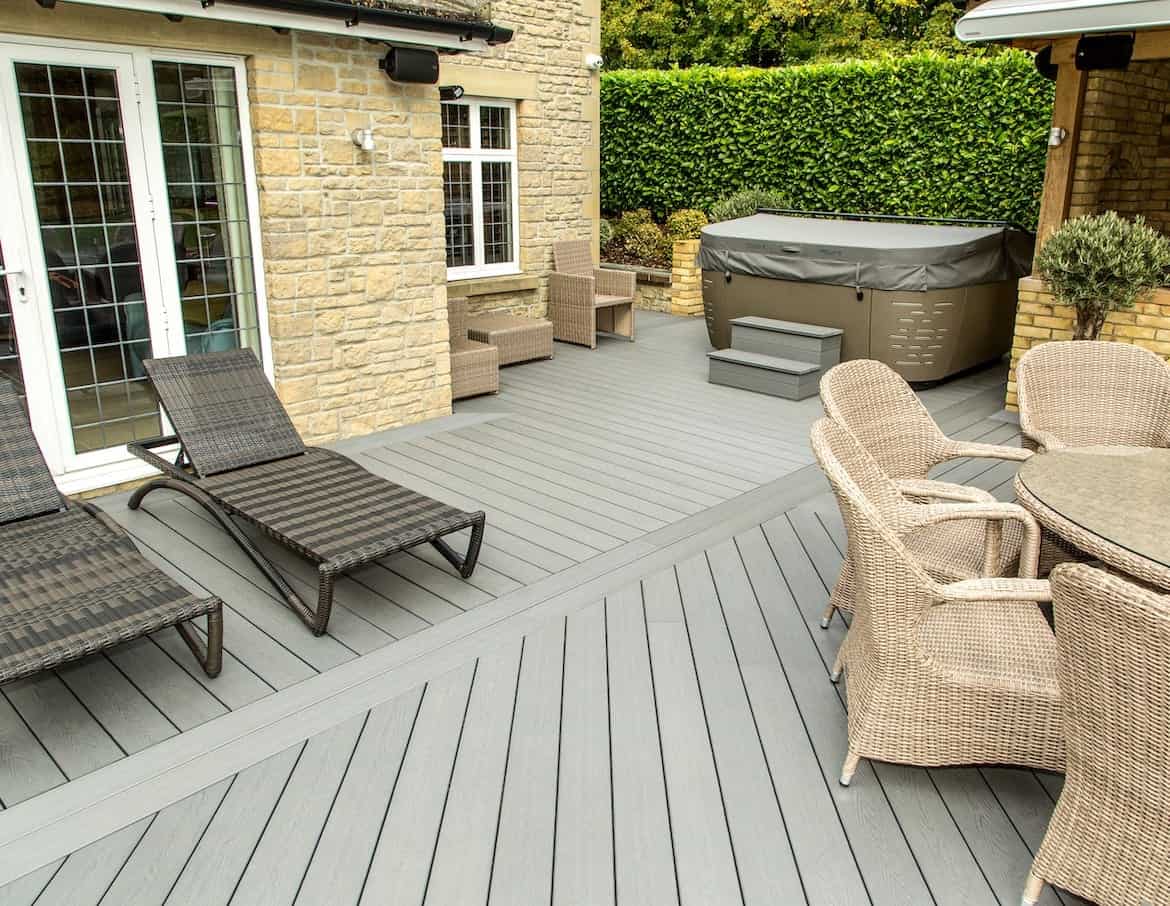
1. The Modern Minimalist Deck: Characterized by clean lines, sleek materials, and a neutral color palette. This style emphasizes functionality and simplicity, often featuring low railings and integrated lighting.
2. The Rustic Charm Deck: This style incorporates natural elements, such as stone retaining walls, wooden planters, and warm-toned composite decking that mimics the look of reclaimed wood.
3. The Tropical Oasis Deck: Create a vibrant and relaxing space with bright colors, lush greenery, and comfortable wicker furniture. A pergola or shade sail provides protection from the sun.
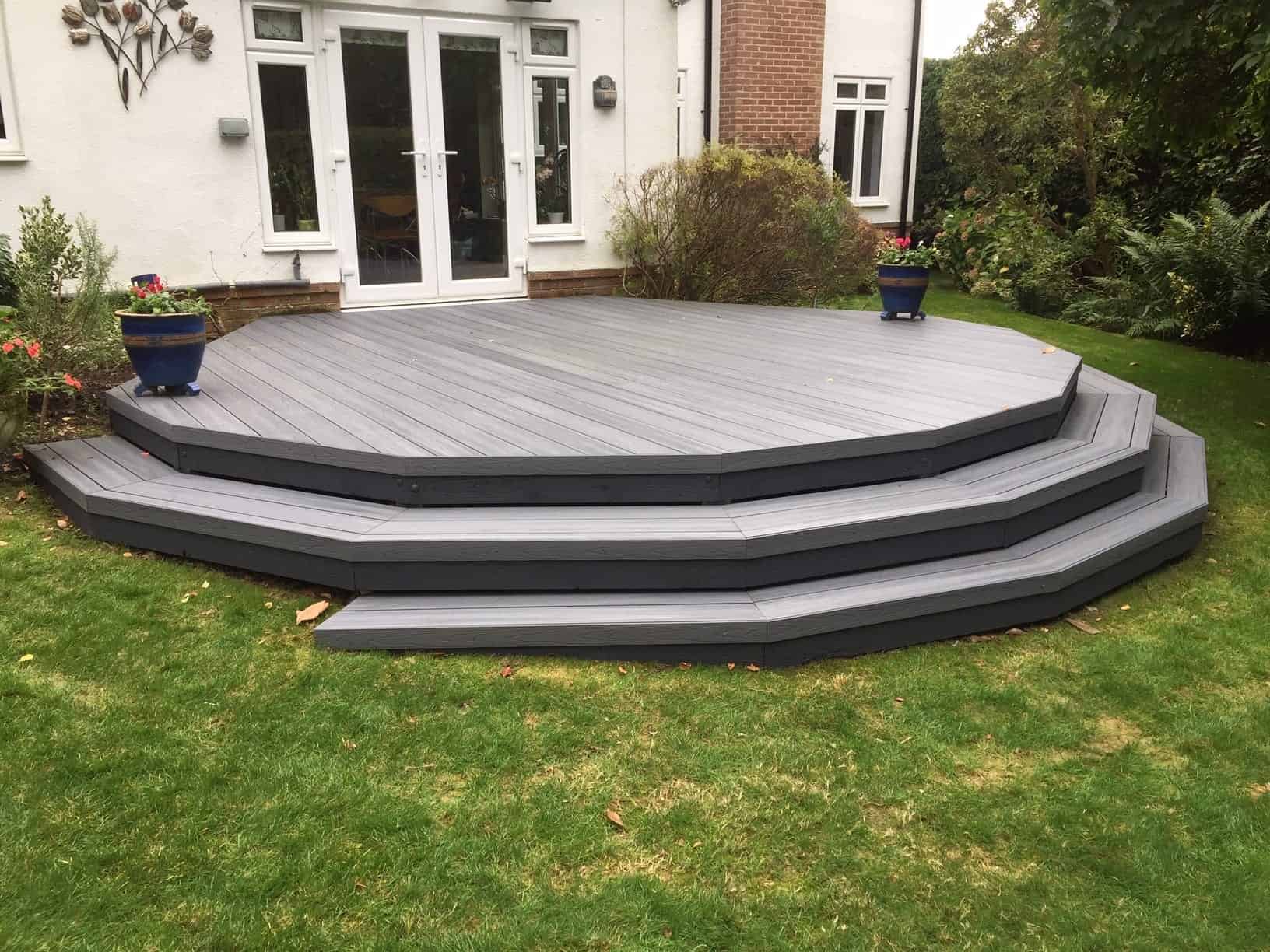
4. The Entertainer's Deck: Designed for large gatherings, this style features ample seating, a built-in grill or outdoor kitchen, and plenty of space for movement.
5. The Poolside Paradise Deck: Integrate your deck seamlessly with your pool area, using slip-resistant composite decking and incorporating features like built-in seating and lighting.
Conclusion: Building Your Outdoor Oasis
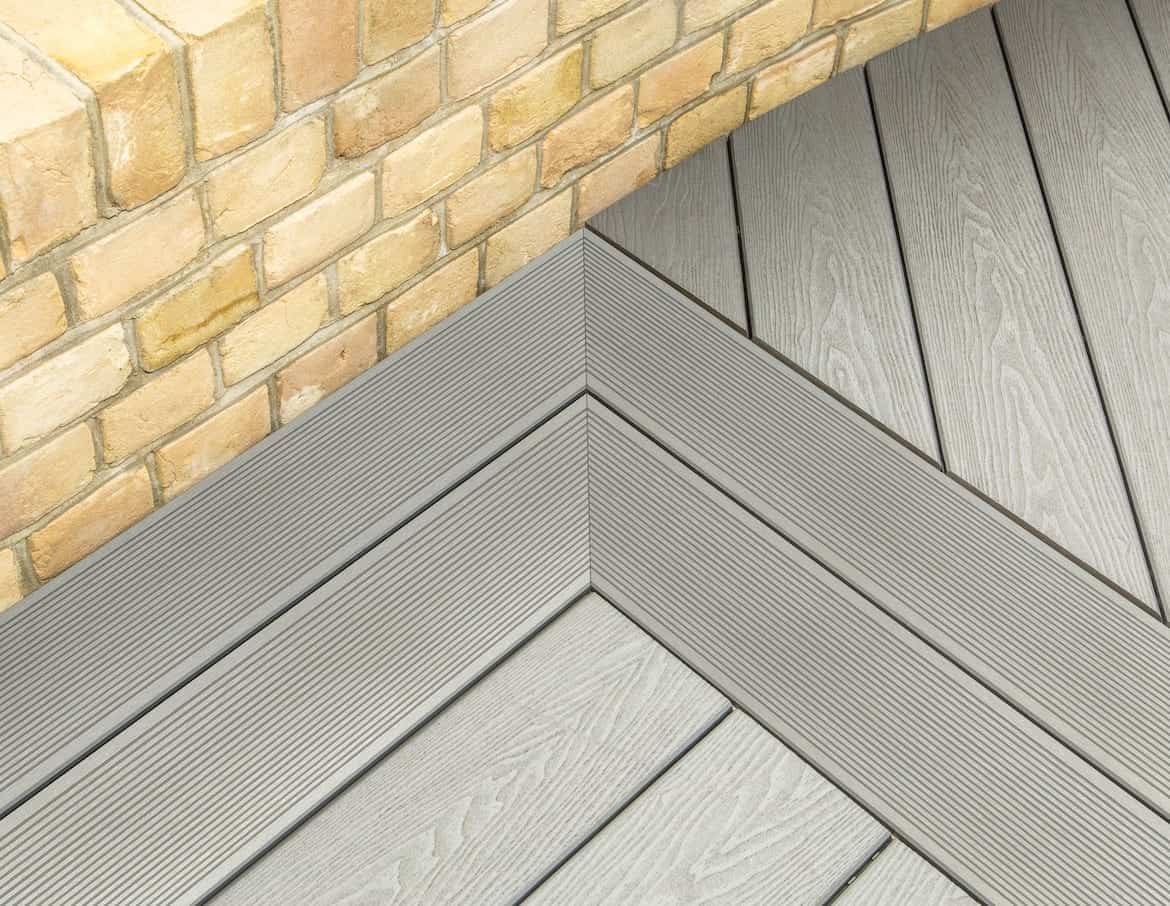
Designing your dream composite deck involves careful planning, attention to detail, and a clear understanding of your needs and preferences. By considering the elements discussed in this guide – from material selection to layout and landscaping integration – you can create a stunning and functional outdoor living space that enhances your home and lifestyle for years to come. Remember to consult with professionals, such as a deck builder or landscape designer, to ensure your vision is brought to life safely and efficiently. Your dream deck awaits!
Composite Decking: Dream Deck Designs Unveiled!
For homeowners seeking the ultimate outdoor living space, composite decking offers a compelling blend of beauty, durability, and low-maintenance practicality. Gone are the days of constant staining, sealing, and splintering associated with traditional wood decks. Composite materials provide a sophisticated and long-lasting alternative, opening up a world of design possibilities for your dream outdoor oasis. This comprehensive guide will delve into the diverse and inspiring world of composite decking designs, exploring everything from materials and styles to incorporating lighting and furniture to create the perfect backyard retreat.
Understanding Composite Decking Materials

Before diving into design ideas, it's crucial to understand the core materials that constitute composite decking. These aren't simply "fake wood" – they are engineered products boasting superior performance characteristics. Common composite materials include:
-
Wood-Plastic Composite (WPC): This is the most prevalent type, combining recycled wood fibers with plastic polymers. The ratio of wood to plastic varies between manufacturers, impacting the final product's density, texture, and price point. Higher wood content often leads to a more natural wood-like appearance, while a higher plastic content contributes to greater durability and resistance to fading.
-
PVC Decking: Polyvinyl chloride (PVC) decking is another popular option known for its exceptional durability and longevity. PVC decks are highly resistant to moisture, insects, and UV degradation, making them ideal for harsh climates. However, they tend to be less flexible than WPC, requiring more careful planning during installation, especially around curves.

- Capped Composite Decking: This represents the premium segment of composite decking. A protective cap is applied over the core composite material, offering superior protection against fading, staining, and scratching. Capped composite decking boasts exceptional longevity and maintains its vibrant color for years, often with extended warranties reflecting this durability.
Choosing the right material depends heavily on your budget, aesthetic preferences, and the specific climate and usage of your deck. Consider factors such as expected foot traffic, exposure to sunlight, and potential for moisture buildup when making your selection. Consult with a reputable decking supplier to discuss the best option for your needs.
Design Ideas: From Classic to Contemporary

The beauty of composite decking lies in its versatility. It can be seamlessly integrated into various architectural styles, from rustic charm to sleek modernity. Let's explore some captivating design ideas:
1. The Classic Elegance of Straight Lines:
This timeless approach features clean, straight lines and simple geometries. Choose wide, evenly spaced planks for a sophisticated look. Consider using a neutral color palette like greys, browns, or tans to create a sense of understated elegance. This design style works exceptionally well with both traditional and modern homes. Adding subtle accent lighting beneath the deck or along the railings can enhance the overall atmosphere.

2. Curvilinear Charm:
For a more organic and flowing design, incorporate curves into your decking layout. This style can create a sense of movement and visual interest, particularly effective in larger spaces. Curved decks can beautifully follow the contours of your landscape, blending seamlessly with the natural environment. Consider adding built-in seating areas along the curves to maximize relaxation and enjoyment.
3. Multi-Level Majesty:

Multiple levels dramatically increase the functionality and visual impact of your deck. A multi-level deck can incorporate distinct zones for dining, lounging, and entertaining. This approach is particularly beneficial for larger yards or properties with sloping terrain. Consider using different materials or colors for each level to create a visually appealing contrast. Staircases and railings should be carefully designed to ensure safety and enhance the overall aesthetic appeal.
4. Incorporating Outdoor Kitchens and Living Spaces:
Composite decking provides the perfect foundation for creating an outdoor kitchen or living area. Its durability and weather resistance make it ideal for supporting built-in grills, counters, and cabinetry. Imagine enjoying al fresco meals surrounded by the comfort and ambiance of your customized outdoor space. Think about adding integrated lighting and fans to ensure comfort and style, regardless of the weather.

5. Coastal Calm:
For those near the coast or seeking a seaside vibe, lighter shades of composite decking, such as whites, creams, or light greys, evoke a sense of airy serenity. Pair this with wicker furniture, coastal-themed decor, and perhaps even a built-in fire pit for a truly relaxing retreat. The light color reflects sunlight, keeping the deck cooler during warmer months.
Enhancing the Design: Lighting, Railings, and Accessories

The beauty of a composite deck design extends beyond just the planks. Strategic use of accessories significantly impacts the overall aesthetic and functionality:
-
Lighting: Careful lighting design transforms the deck into a magical space, usable far beyond daylight hours. Recessed lighting, pendant lights, string lights, and pathway lights can create a warm and inviting ambiance.
-
Railings: Railings aren't merely safety features; they're design elements. Choose railings that complement your deck's style. Options range from classic wood-like composite railings to sleek, modern metal designs. Consider incorporating glass panels for a more open and airy feel.

-
Furniture: Select furniture that complements the deck's style and your personal preferences. Comfortable seating, dining sets, and even outdoor hammocks can create a relaxing and inviting atmosphere. Consider weather-resistant materials that can withstand the elements.
-
Planters and Greenery: Adding potted plants, hanging baskets, and vertical gardens adds a touch of natural beauty and softens the hard lines of the deck. Choose plants that thrive in your climate and complement your design scheme.
Maintenance and Longevity: The Unsung Benefits

One of the primary advantages of composite decking is its low-maintenance nature. Unlike traditional wood decks, composite decks require minimal upkeep. Regular sweeping and occasional washing with mild detergent are generally sufficient to maintain their appearance and prevent the buildup of dirt and debris. Avoid harsh chemicals, as these can damage the surface of the decking. With proper care, a composite deck can retain its beauty and functionality for decades.
The longevity of a composite deck is a significant investment benefit. Manufacturers typically offer warranties of 20 years or more, attesting to the durability of these materials. This makes composite decking a cost-effective choice in the long run, particularly when considering the costs associated with regular maintenance and eventual replacement of traditional wood decks.
Conclusion: Your Dream Deck Awaits

Choosing composite decking unlocks a wealth of creative possibilities for your outdoor space. From classic elegance to contemporary curves, the design options are virtually limitless. By carefully considering materials, incorporating thoughtful design elements, and choosing the right accessories, you can create a personalized outdoor oasis that reflects your individual style and enhances your lifestyle. So, embark on your dream deck journey – the possibilities are truly endless. With the right planning and a dash of creativity, your backyard can become the ultimate destination for relaxation, entertainment, and unforgettable memories.

